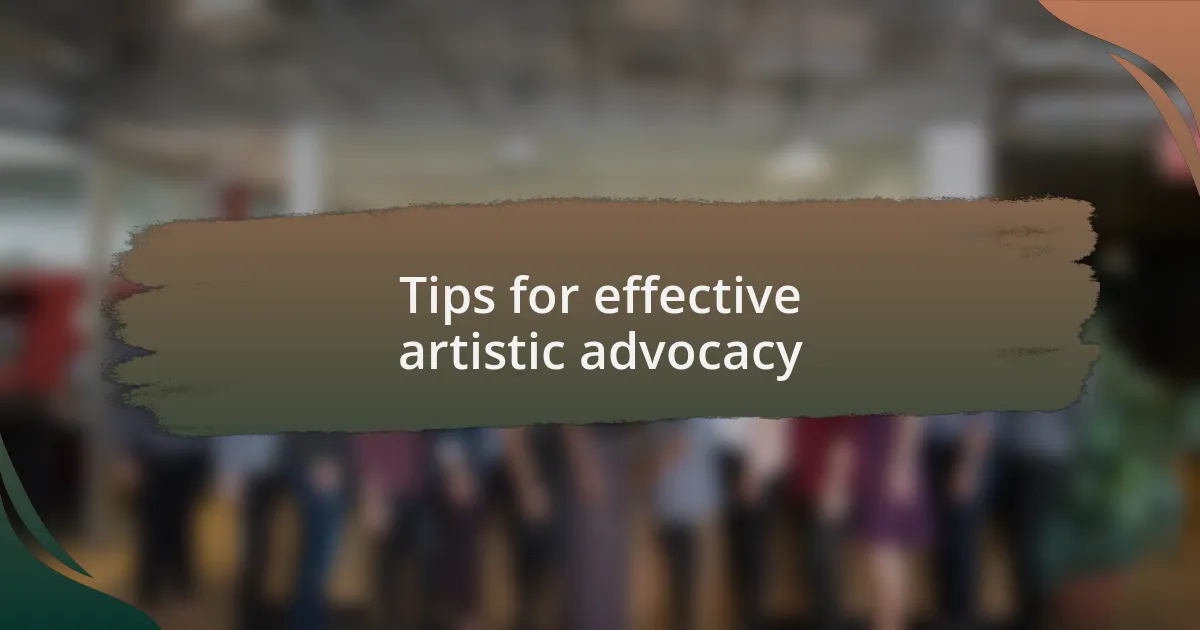Key takeaways:
- Women’s health advocacy focuses on addressing unique health challenges and systemic inequalities faced by women.
- Emphasizing empathy and emotional support in healthcare is vital for holistic health approaches.
- Authentic artistic advocacy can effectively engage communities and spark important conversations about health issues.
- Collaboration with local organizations enhances advocacy efforts and creates a comprehensive view of health challenges.
Understanding women’s health advocacy
Women’s health advocacy is about ensuring that women receive the care and policies they need for their unique health challenges. It’s not just about medical facts; it’s about listening to their stories and amplifying their voices. For instance, I remember a local gathering where women shared their experiences; it was powerful to witness them connect over similar struggles, reminding me that these conversations are crucial in pushing for better healthcare.
As I delved deeper into women’s health advocacy, I realized it involves addressing systemic inequalities that often leave women marginalized. Have you ever considered why certain health issues, like reproductive health, rarely get the attention they deserve? I’ve seen firsthand how this silence can lead to misunderstandings and even dangerous outcomes. Engaging with communities allows us to pinpoint these gaps, and it’s empowering to be part of the solution, advocating for change.
Additionally, the emotional toll of inadequate care cannot be underestimated. I recall speaking with a woman who felt dismissed during her treatment; her story highlighted the importance of empathy and understanding within healthcare settings. Isn’t it disheartening to think that emotional support often lags behind medical treatment? We have an opportunity not just to advocate for better services but also to foster an environment where women feel safe and heard, paving the way for holistic health approaches.

Tips for effective artistic advocacy
When I think about effective artistic advocacy, one clear tip stands out: authenticity. In my experience, creating art that reflects true stories and emotions resonates deeply with audiences. For instance, I once collaborated with women from diverse backgrounds to create a mural that depicted their journey with healthcare. The process not only empowered the participants but also sparked conversations in the community about their shared struggles, showcasing how art can serve as a powerful medium for truth.
Another crucial aspect is the importance of collaboration with local organizations. I remember partnering with a women’s health clinic to host an art exhibition that highlighted issues like access to prenatal care. This collaboration not only provided a platform for artists but also ensured that the medical perspective was incorporated, creating a holistic view of the health challenges faced. By joining forces, we amplified our voices and reached a wider audience, proving that collective efforts can lead to significant change.
Lastly, never underestimate the impact of interactive art. I found that engaging directly with the community through workshops and interactive installations creates a dynamic dialogue about health issues. I once facilitated a community art session where participants could express their health narratives on a large canvas. The stories poured out like color, revealing fears, hopes, and desires. Have you thought about how such experiences could transform an audience’s understanding? Interactive art truly invites people to connect personally, fostering a deeper connection to the issues at hand.